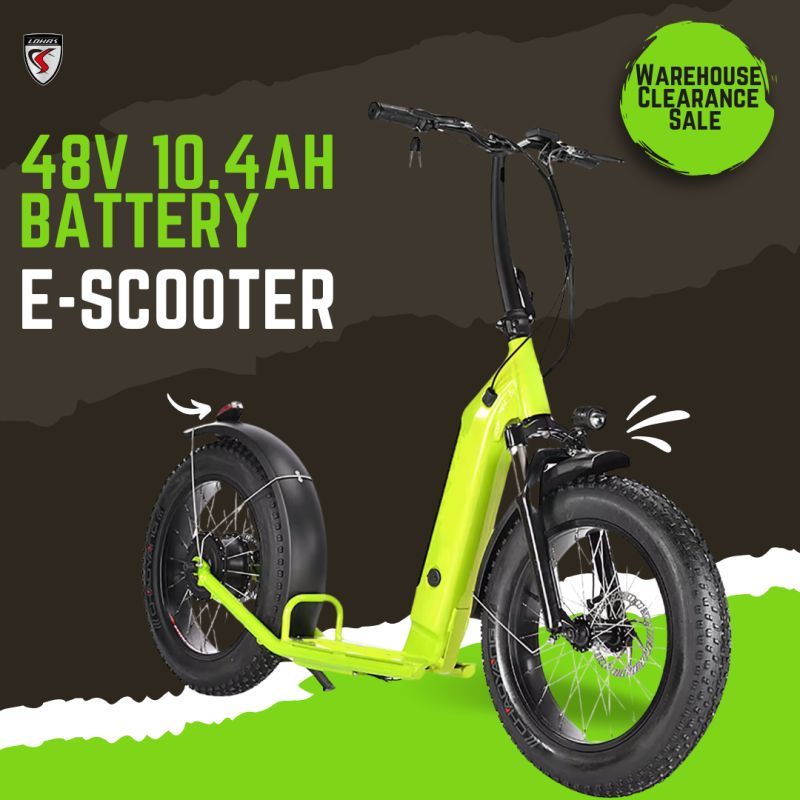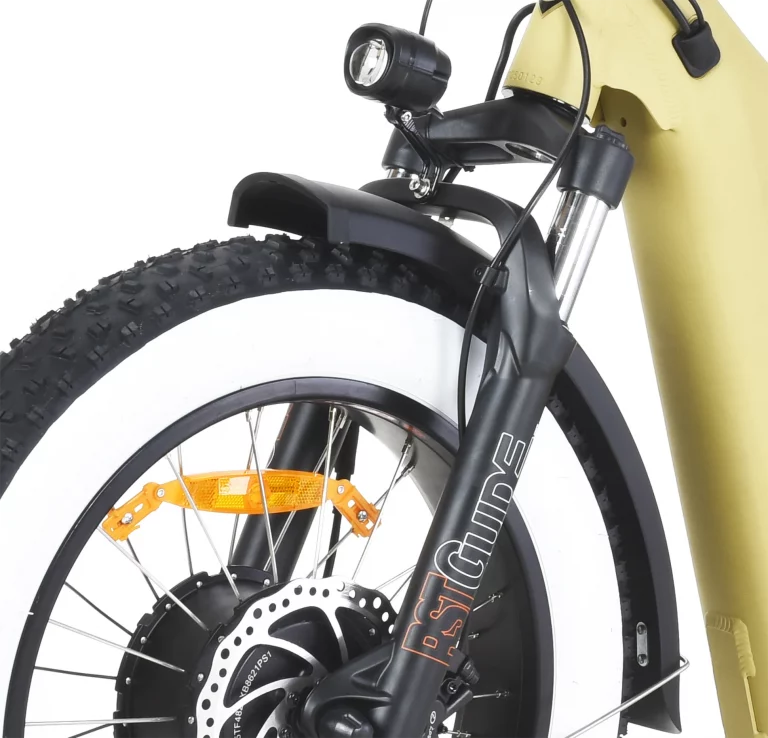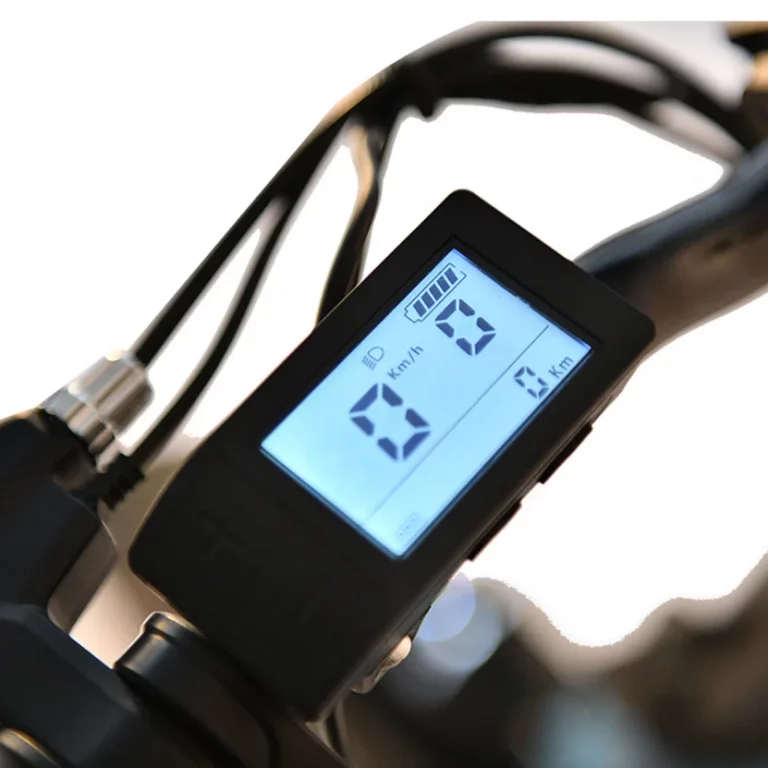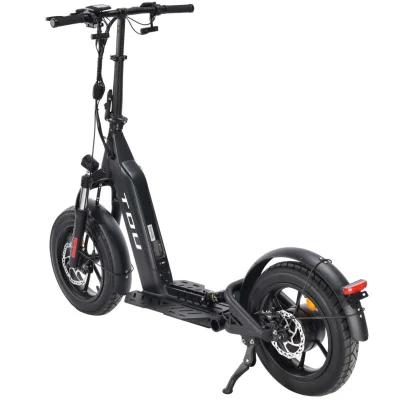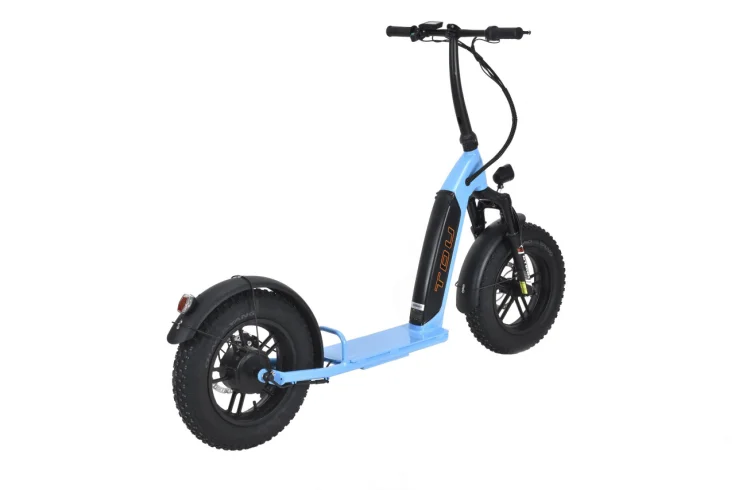In urban areas, transportation poses significant challenges, from congestion to environmental impact. Electric Scooters and Public Transportation: Complementary or Alternative? have emerged as a promising solution, reshaping the way people move within cities. This blog explores the role of electric scooters in transforming urban mobility and enhancing public transportation systems. By delving into case studies and future prospects, we aim to highlight the benefits of integrating e-scooters into existing transit networks.
Electric Scooters and Public Transportation: Complementary or Alternative?
The Role of Electric Scooters
Complementing Public Transportation
Electric scooters offer a convenient mode of travel that can seamlessly integrate with existing public transportation systems. Riders can easily transition from buses or trains to e-scooters for efficient short-distance commutes. This integration enhances the overall urban mobility experience, providing a flexible and eco-friendly alternative for city dwellers.
Competing with Public Transportation
In some scenarios, electric scooters may be seen as competing with traditional public transit options. However, rather than creating a rivalry, e-scooters complement public transportation by addressing specific travel needs. For instance, e-scooters excel in solving the last-mile problem, bridging the gap between public transit stations and final destinations. This synergy between electric scooters and public transportation leads to a more comprehensive and accessible urban transport network.
Case Studies
Examples from Various Cities
A study on Patterns of E-Scooter Use in Combination with Public Transport revealed insightful data on how riders utilize shared e-scooters alongside traditional transit modes. The findings underscored the seamless transition between different transport options facilitated by electric scooters. By incorporating e-scooter sharing services into their daily commute, individuals benefit from increased mobility and flexibility in navigating urban environments.
Impact on Public Transport Ridership
The Case for E-Scooters as Public Transit advocates for the integration of e-scooters within multi-modal transit ecosystems to enhance user experiences. By allowing passengers to effortlessly switch between various modes using a single payment card, electric scooters streamline the commuting process. This approach not only supports public transportation systems but also encourages sustainable travel practices among urban residents.
Future Prospects
Integration with Public Transport
As electric scooters continue to gain popularity, their seamless integration with public transport networks becomes increasingly vital. Urban planners are exploring innovative ways to incorporate e-scooter infrastructure within existing transit hubs to promote intermodal connectivity. By strategically placing docking stations near bus stops and train stations, cities can encourage more commuters to embrace this efficient mode of transportation.
Policy Implications
To fully realize the benefits of integrating electric scooters into public transportation systems, policymakers must establish clear guidelines and regulations. Creating dedicated lanes for e-scooter riders and implementing safety measures will ensure harmonious coexistence with other road users. Additionally, promoting awareness campaigns about the advantages of micro-mobility solutions can foster greater acceptance and usage among city residents.
Changing Urban Transportation
The Rise of Electric Scooters
Adoption Rates
In just their second year in the market, Electric Scooters witnessed an impressive adoption rate. A staggering 88.5 million trips were taken on electric scooters, showcasing the rapid embrace of this innovative mode of urban transportation. The electrification of scooters has been a significant catalyst in driving this high adoption rate, revolutionizing the way people navigate urban landscapes.
Popularity Among Urban Dwellers
Electric Scooters have become increasingly popular among urban dwellers seeking efficient and sustainable commuting options. Surpassing the early adoption rates seen by popular ride-hailing applications, e-scooters offer a convenient and eco-friendly alternative for short city commutes. Their ease of use and flexibility have made them a favored choice for individuals looking to navigate congested cities with ease.
Environmental Impact
Eco-Friendly Benefits
One of the most notable advantages of Electric Scooters is their eco-friendly nature. By emitting zero harmful gases, e-scooters contribute significantly to reducing air pollution in crowded urban areas. Their energy-efficient operation not only helps in preserving the environment but also promotes sustainable mobility practices among city residents.
Addressing Concerns
Addressing common concerns related to traffic congestion and environmental degradation, Electric Scooters offer a viable solution for promoting cleaner and greener transportation options. With their safe and effortless operation, e-scooters cater to a wide range of users, including younger individuals and those with disabilities. This inclusivity further enhances their appeal as a sustainable mode of urban transport.
Economic Impact
Cost-Effectiveness
In addition to their environmental benefits, Electric Scooters present a cost-effective commuting option for regular city travelers. With low operating costs compared to traditional vehicles, e-scooters offer an affordable way to navigate bustling cities without compromising on convenience or speed. This economic advantage makes them an attractive choice for budget-conscious commuters seeking efficient travel solutions.
Job Creation
The rise of Electric Scooters has not only transformed urban transportation but also created new opportunities for job seekers in the micro-mobility sector. From maintenance technicians to fleet managers, the growing demand for e-scooter services has led to job creation across various roles within the industry. This economic ripple effect highlights the positive impact that e-scooters have on both mobility and employment in urban environments.
Scooter Surge
Urban Planning and Infrastructure
Adaptation of Cities
Cities worldwide are witnessing a transformative shift in urban planning to accommodate the rising trend of electric scooters. The adaptation process involves redesigning existing infrastructure to create dedicated lanes and parking spaces for e-scooter users. By integrating these micro-mobility solutions into the urban landscape, cities can enhance accessibility and promote sustainable transportation options.
Infrastructure Development
The development of e-scooter infrastructure plays a crucial role in supporting the growing demand for this mode of transportation. Cities are investing in charging stations, maintenance facilities, and safety signage to ensure a seamless experience for riders. This infrastructure development not only fosters the integration of electric scooters but also contributes to the overall enhancement of urban mobility systems.
Safety and Regulations
Safety Measures
Ensuring the safety of e-scooter riders is paramount in promoting their widespread use as a viable transportation option. Cities are implementing safety measures such as mandatory helmet laws, speed limits, and rider education programs to mitigate risks associated with e-scooter usage. By prioritizing safety, urban areas can create a conducive environment for both e-scooter riders and other road users.
Regulatory Framework
Establishing a comprehensive regulatory framework is essential for governing the operation of electric scooters within city limits. Regulations cover aspects such as licensing requirements, parking guidelines, and enforcement protocols to maintain order on the streets. By enforcing clear rules and guidelines, cities can ensure responsible e-scooter usage while fostering harmonious coexistence with traditional modes of transport.
Social Acceptance
Public Perception
The public perception of electric scooters has been largely positive, with many viewing them as a convenient and eco-friendly mode of transportation. Riders appreciate the flexibility and ease of use offered by e-scooters, making them an attractive choice for short trips within urban areas. As more individuals embrace this innovative form of mobility, public perception continues to evolve positively towards integrating electric scooters into daily commuting routines.
Community Feedback
Community feedback plays a vital role in shaping the future acceptance and integration of electric scooters within cities. Gathering input from residents regarding e-scooter usage patterns, concerns, and suggestions enables policymakers to tailor regulations that align with community needs. By fostering open communication channels between stakeholders, cities can address feedback constructively and enhance the overall experience of using electric scooters in urban environments.
In summary, Electric Scooters play a pivotal role in transforming urban transportation by offering an affordable, eco-friendly, and convenient alternative to traditional modes of travel. The future outlook for Electric Scooters appears promising, with advancements expected to enhance their efficiency further. As cities embrace these innovative solutions, we can anticipate a shift towards more sustainable and efficient urban mobility systems.
Yongkang LOHAS Vehicle Co., Ltd
LOHAS, a pioneer in the electric scooter industry, is playing a significant role in the urban transformation towards sustainable transportation. Their electric scooters are designed to provide an eco-friendly, efficient, and convenient mode of travel, making them an integral part of the urban mobility revolution.
One of LOHAS’s standout models is the LOHAS Electric Scooter KCES005. This scooter is powered by a robust XAD 350W integrated wheel motor and a removable 48V 10.4Ah lithium-ion battery. With a maximum speed of 32KM/H and a range of 35-40km, it’s an ideal choice for urban commuting, offering a seamless blend of speed, power, and distance.
Safety is a paramount feature of the LOHAS Electric Scooter KCES005. It comes equipped with front and rear Tektro mechanical disc brakes, ensuring reliable stopping power. The scooter’s frame and rim are made of durable aluminum alloy 6061, providing a sturdy and stable ride on various urban terrains.
The LOHAS Electric Scooter KCES005 is lightweight, weighing only 23KG, making it easy to maneuver through bustling city streets. Despite its light weight, it has a loading capacity of 150KG, accommodating riders of different sizes. Its compact design also makes it easy to pack and ship, ensuring a hassle-free delivery process.
The design of the LOHAS Electric Scooter KCES005 is sleek and modern, making it a stylish choice for urban commuters. Its 16-inch X4.0 fat tire by Chaoyang offers excellent traction and control, enhancing the overall riding experience.
In conclusion, the LOHAS Electric Scooter KCES005 is a game-changer in urban transportation. It offers a greener, more efficient, and convenient way of commuting, contributing significantly to the urban transformation towards sustainable mobility. With LOHAS, you can navigate the city in style while reducing your carbon footprint and embracing the future of urban transportation.

